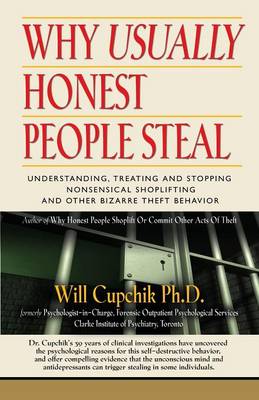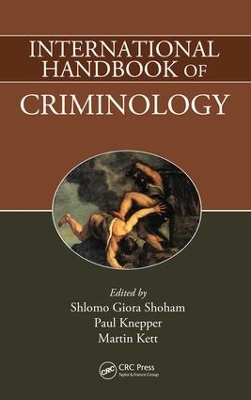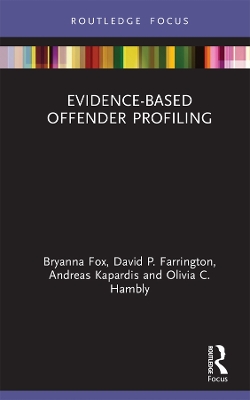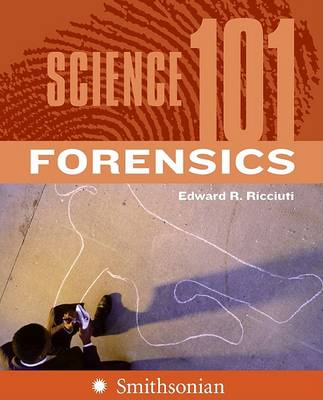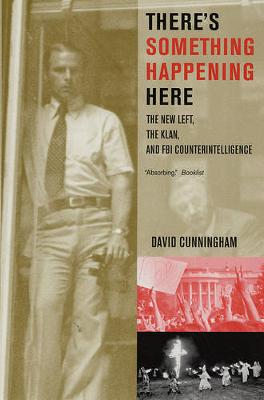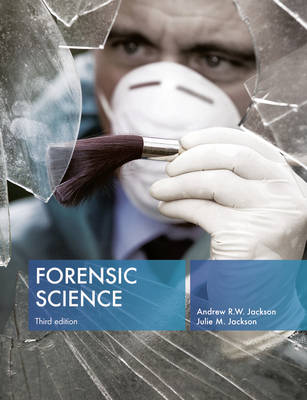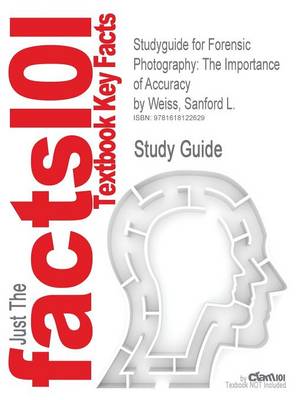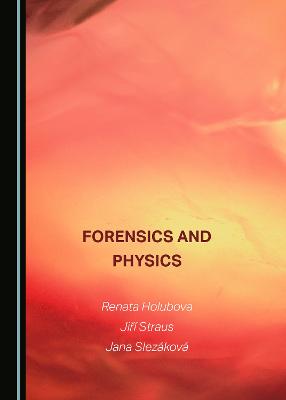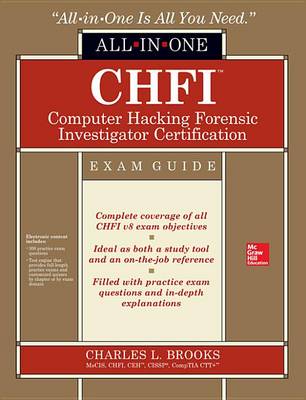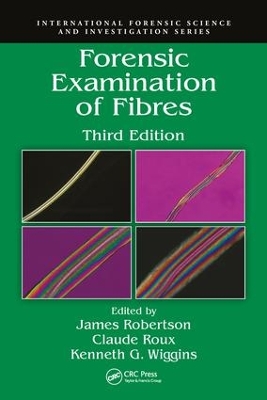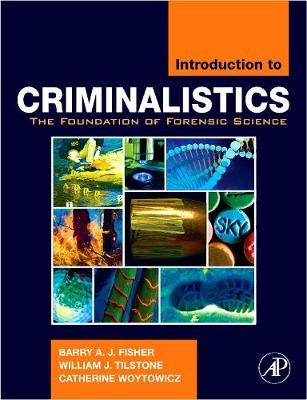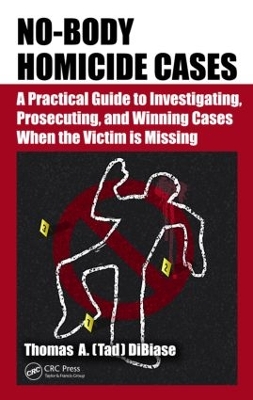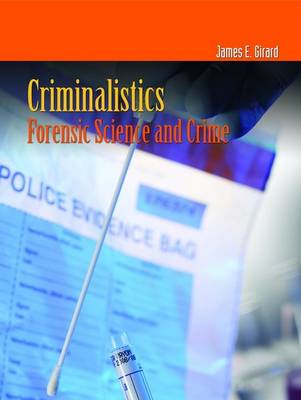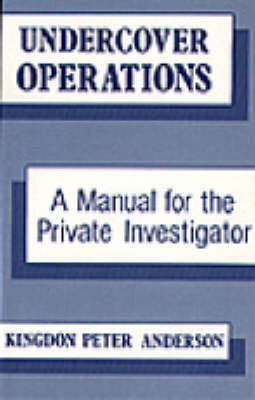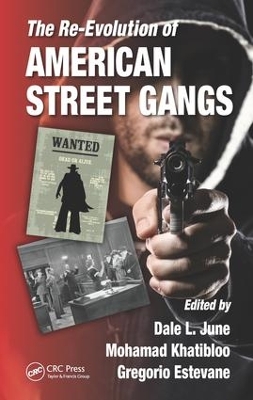Criminal Law, Procedure, and Evidence - Instructors Manual
by Walter P. Signorelli
Forensic Chemistry (Chemical Analysis: A Series of Monographs on Analytical Chemistry and Its Applications)
by James D Winefordner
Forensic Chemistry provides forensic chemists with the necessary background information needed to examine physical evidence and interpret the results from the examination of this evidence. The peer-reviewed text covers background material on the interface between chemistry and the law, the physical and chemical analysis of materials that are commonly encountered in a forensics laboratory, crime scenes, and civil cases, and the interpretation of this evidence. The text includes a chapter on commu...
International Handbook of Criminology
A substantive guide to state of the art research and theory, the International Handbook of Criminology completes an esteemed trilogy of comparative analyses and insight from worldwide experts. Exploring a phenomenon that penetrates cultures of all racial, ethnic, and social classes, this volume continues in the tradition of its predecessors in the
The Definitive Handbook on Terrorist Threats to Commercial Airline and Airport Security Considered the definitive handbook on the terrorist threat to commercial airline and airport security, USAF Lieutenant Colonel Kathleen Sweet's seminal resource is now updated to include an analysis of modern day risks. She covers the history of aviation security and compares current in-flight security practices with those of other countries. Covering Transportation Security Administration changes in securi...
Evidence-Based Offender Profiling (Criminology in Focus)
by Bryanna Fox, David P. Farrington, Andreas Kapardis, and Olivia C. Hambly
Offender profiling is an investigative tool used to narrow down the range of potential suspects for a crime by predicting the personality, behavioral, and demographic characteristics that an offender is likely to possess, based upon information collected at the crime scene. While offender profiling has been popularized by TV shows and movies such as Criminal Minds, Silence of the Lambs, and Mindhunter, the real-world impact of offender profiling is largely unknown. This book discusses the histor...
Using over twelve thousand previously classified documents made available through the Freedom of Information Act, David Cunningham uncovers the riveting inside story of the FBI's attempts to neutralize political targets on both the Right and the Left during the 1960s. Examining the FBI's infamous counterintelligence programs (COINTELPROs) against suspected communists, civil rights and black power advocates, Klan adherents, and antiwar activists, he questions whether such actions were aberrations...
Until recently professionals in both investigation and treatment have considered the fields of sexual violence and domestic abuse as separate and distinct. Numerous studies have shown, however, that these fields may not be so neatly pigeonholed as once believed. Statistics indicate that there is an overlap in both the level and type of violence exp
This book is the perfect starting point for any newcomer to the field of forensic science. It examines the entire process of conducting forensic science, from the collection of evidence at the crime scene, through the examination of that evidence, to the presentation of scientific findings in court. The book is scientifically rigorous but written in a friendly and engaging style making it the ideal companion for undergraduate students beginning a forensic science course; as background for MSc st...
Chfi Computer Hacking Forensic Investigator Certification All-In-One Exam Guide
by Charles L Brooks
Forensic Examination of Fibres (International Forensic Science and Investigation)
by James Robertson, Claude Roux, and Kenneth G. Wiggins
In order for forensic fibre examiners to fully utilize fibre and textile evidence during their analysis, they require not only specialised forensic knowledge but also in-depth knowledge of fibres, yarns and fabrics themselves. Production, both the chemical and physical structure, and the properties of these materials is required in order to determine the value of fibre evidence. This includes knowing production figures, fashion changes, sudden arrivals of new materials, dye variability, and nume...
Disaster management has become an increasingly global issue, and victim identification is receiving greater attention. By raising awareness through past events and experiences, practitioners and policymakers can learn what works, what doesn't work, and how to avoid future mistakes. Disaster Victim Identification: Experience and Practice presents a
Cryptographic Crimes (Criminal Humanities & Forensic Semiotics, #5)
by Marcel Danesi
This book examines the use of cryptography in both real and fictional crimes-a topic that is rarely broached. It discusses famous crimes, such as that of the Zodiac Killer, that revolve around cryptic messages and current uses of encryption that make solving cases harder and harder. It then draws parallels with the use of cryptography and secret writing in crime fiction, starting with Edgar Allan Poe and Arthur Conan Doyle, claiming that there is an implicit principle in all such writing-namely,...
The Estimation of the Time since Death in the Early Post Mortem Period, 2Ed
by B. Madea, Thomas Krompecher, Bernard Knight, Len Nokes, and Claus Henssge
Introduction to Criminalistics
by Barry A.J. Fisher, William J. Tilstone, and Catherine Woytowicz
Introduction to Criminalistics covers the basics of Criminalistics in a textbook for a one or two semester course, with the intention of preparing the student for a future in forensic science. The role of the Criminalist is to analyze, compare, identify, and interpret physical evidence in the crime lab. These crime labs, or forensic labs, have two primary functions: identifying evidence and linking the suspect, victim, and crime scene through physical evidence. This new primer introduces t...
Forensic Analysis
How do you prove someone guilty of murder when the best piece of evidence—the victim’s body—is missing? Exclusively dedicated to the investigation and prosecution of no-body homicide cases, this book provides the author’s insight gained from investigating and trying a no-body case along with what he’s learned consulting on scores of others across the country. A practical guide for police and prosecutors, it takes an expansive look at both the history of no-body murder cases and the best methods...
Providing a comprehensive introduction to forensic science for readers with a limited scientific background, this text examines how science is used in criminal investigations today, as well as reviewing the capabilities and limitations of current crime laboratories.
Each year, employee theft and narcotics abuse cost companies billions of dollars in losses, and covert operations can address these problems. This unique guide to an intriguing, lucrative line of work covers infiltrating the workplace, establishing a cover identity and maintaining personal safety. Learn how to negotiate fees with clients, prepare written reports, preserve the confidentiality of the investigation and avoid pitfalls such as entrapment and inadmissible evidence.
The Re-Evolution of American Street Gangs
The problem of gangs and gang subculture is a growing threat to the stability of neighborhoods and entire communities. During the past two decades, gang members have increasingly migrated from large urban centers to suburban areas and other countries. This book addresses the intricacies and diversities of street gangs, drawing on the expertise of h
